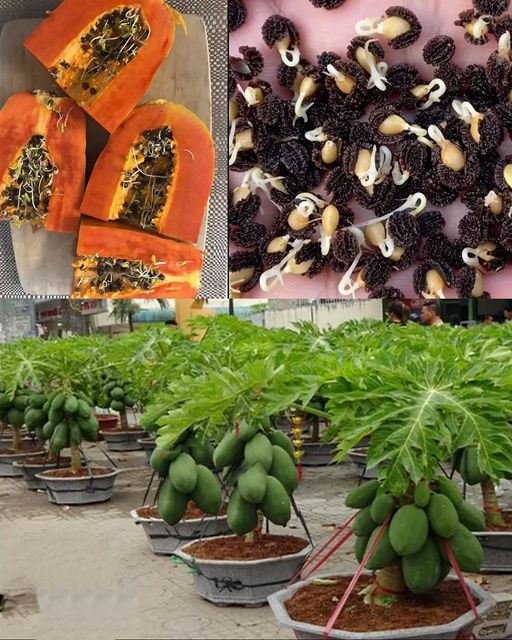Discovering the Key to Producing Abundant Papaya Harvests Through the Use of Container Gardening
Gardeners all over the world are captivated by papayas because of their delicious flavor and the ample amount of nutrients they contain. The cultivation of papayas is often linked with tropical areas; nevertheless, container gardening provides enthusiasts with the opportunity to produce papayas even in temperate places. With the help of this tutorial, you will learn the essential techniques to cultivate papaya plants that are prospering right in your very own backyard sanctuary.
The Selection of High-Quality Papaya Seeds
Put your best foot forward in the world of papaya cultivation by choosing quality seeds with great care:
When selecting papayas, it is important to choose completely matured fruits that contain seeds that are ready to be planted.
The preparation of the seeds involves removing the seeds from the papaya, removing any pulp that may be present, and allowing them to air-dry for a couple of days.
Beginning the process of papaya seed germination
These efficient germination procedures will help you get your papaya seedlings off to a good start in terms of growth:
The method of using a moist paper towel involves placing the seeds on a damp paper towel, folding it carefully, and then placing it inside a plastic bag.
Temperatures should be kept between 24 and 29 degrees Celsius (75 and 85 degrees Fahrenheit), and direct sunlight should be avoided.
In a period of one to two weeks, you should anticipate the appearance of sprouts, which will indicate that the plant is ready to be planted.
Growing Papaya in Containers for Planting
Place your seeds that have grown into containers so that they may begin their development to begin:
For the selection of containers, choose pots that are roomy, ideally between 10 and 15 gallons in capacity, and have sufficient drainage.
Growing Papaya in Containers for Planting
Place your seeds that have grown into containers so that they may begin their development to begin:
For the selection of containers, choose pots that are roomy, ideally between 10 and 15 gallons in capacity, and have sufficient drainage.
For the preparation of the soil, fill the containers with a potting mix that has a pH range of 6.0 to 6.5 and is slightly acidic to neutral. Additionally, add compost to the mixture.
ADVERTISEMENT

